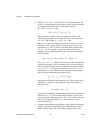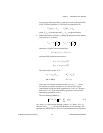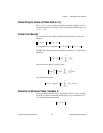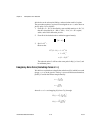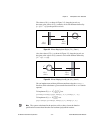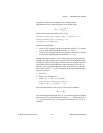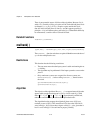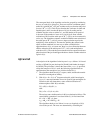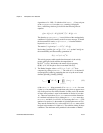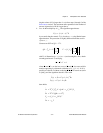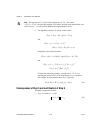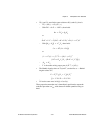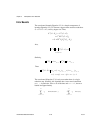Chapter 3 Multiplicative Error Reduction
© National Instruments Corporation 3-13 Xmath Model Reduction Module
again with a bilinear transformation to secure multiplicative
approximations over a limited frequency band. Suppose that
Create a system that corresponds to with:
gtildesys=subs(gsys,(makep([-eps,1])/makep([1,-]))
bilinsys=makep([eps,1])/makep([1,0])
sys=subsys(sys,bilinsys)
Under this transformation:
•Values of G(s) along the jω-axis correspond to values of around
a circle in the left half plane on diameter (–ε
–1
+ j0, 0).
• Values of along the jω-axis correspond to values of G(s) around
a circle in the right half plane on diameter (0, ε
–1
+ j0).
Multiplicative approximation of (along the jω-axis) corresponds to
multiplicative approximation of G(s) around a circle in the right half plane,
touching the jω-axis at the origin. For those points on the jω-axis near the
circle, there will be good multiplicative approximation of G( jω). If it is
desired to have a good approximation of G(s) over an interval [–jΩ, jΩ],
then a choice such as ε
–1
= 5 Ω or 10 Ω needs to be made. Reduction then
proceeds as follows:
1. Form .
2. Reduce through
bst( ).
3. Form with:
gsys=subsys(gtildesys(gtildesys,
makep([-eps,-1])/makep[-1,-0]))
Notice that the number of zeros of G(s) in the circle of diameter
sets a lower bound on the degree of G
r
(s)—for such zeros become right half
plane zeros of , and must be preserved by
bst( ). Obviously, zeros at
s = ∞ are never in this circle, so a procedure for reducing G(s) = 1/d(s) is
available.
G
˜
s() G
s
εs 1+
--------------
=
G
˜
s()
G
˜
s()
G
˜
s()
G
˜
s()
G
˜
s()
G
˜
s()
G
r
s() G
˜
r
s 1 εs–()⁄()–=
0 ε
1–
, j0+()s
G
˜
s()




